





All over the world, the color blue is associated with peace. Although it can be hard to separate out cultural biases in such studies, it does seem that blue has an intrinsic effect on the human psyche and may even cause the body to produce calming chemicals. Perhaps it is this lack of an arousing effect that has led to being sad being called "blue". However, that has not impacted the popularity of blue. Blue is a widely-used and well-liked color.
It is easy to incorporate blue into the garden. Many flowers are blue or a near-blue shade of purple. The table below shows a sample of blue flowers. (Before planting any of these, check the Plant Files or other reputable source to determine if they are suitable for you area.) Blue is a color that gives the illusion of receding visually. Planting blue flowers at the back of a small garden may make it appear a little larger.
Some species of flowers come in many different colors and sometimes every color but blue. It is the Holy Grail of plant breeders to come up with true blue flowers of these species, especially roses. At the time of this writing, all so-called blue roses are actually what I call a pinkish shade of purple. Daylily breeders are getting close to true blue, but they are still more purple than blue, in my opinion. When buying plants like roses, tulips, daylilies, amaryllis, Christmas cactus, dahlias, and anything else for which blue has been elusive, be wary of claims about blue flowers. If possible, look up the variety in an independent source and see how blue is really is - or isn't.
Some trees and shrubs have blue-green foliage. Often this is due to the presence of waxes that protect the plant in its native climate from strong, high-elevation sun, hot desert sun, and/or drying winds. This suggests that a lot of these plants would be cactuses and succulents and that is true, but perhaps the best-known blue-green foliage plant is the Colorado blue spruce. There are also bluish junipers and bluish palms. Smaller plants with bluish foliage include some hostas, blue fescue, and rue.
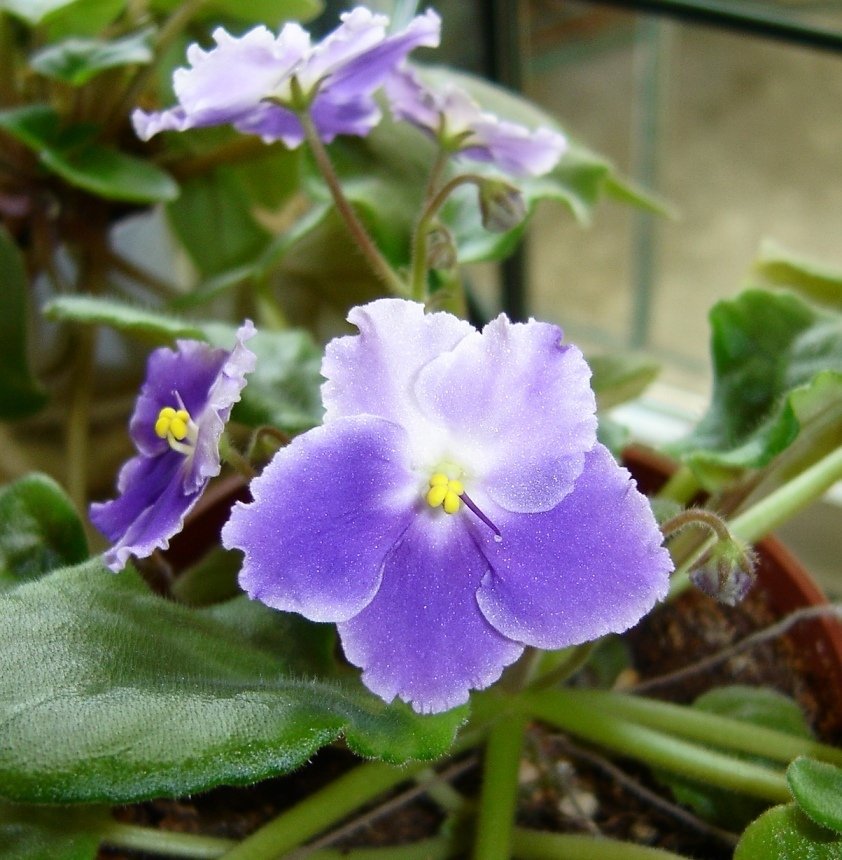
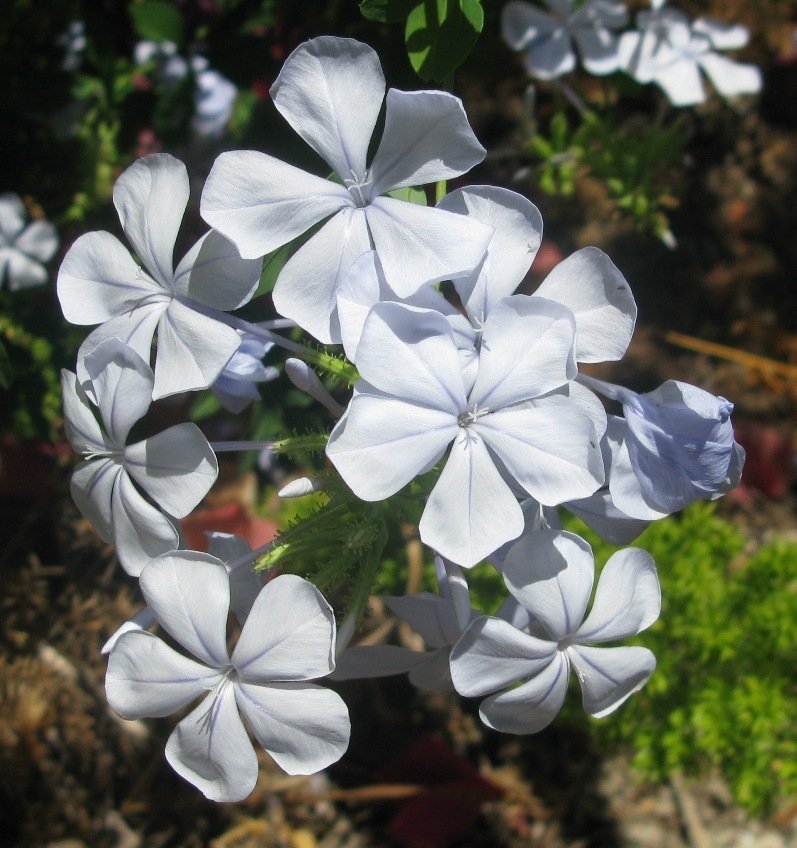
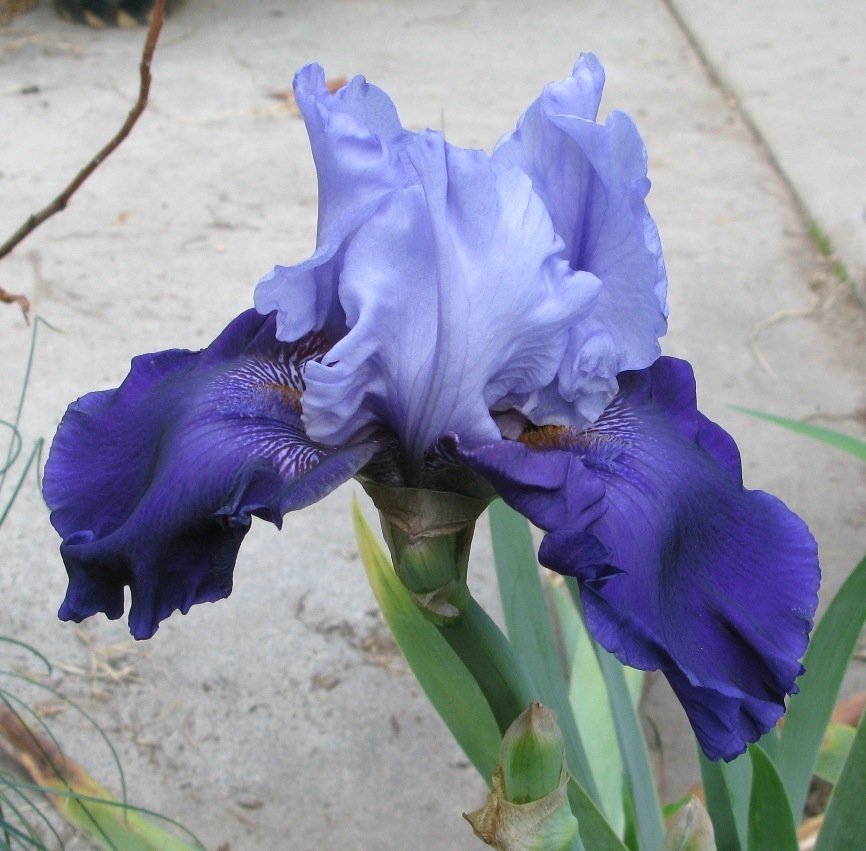
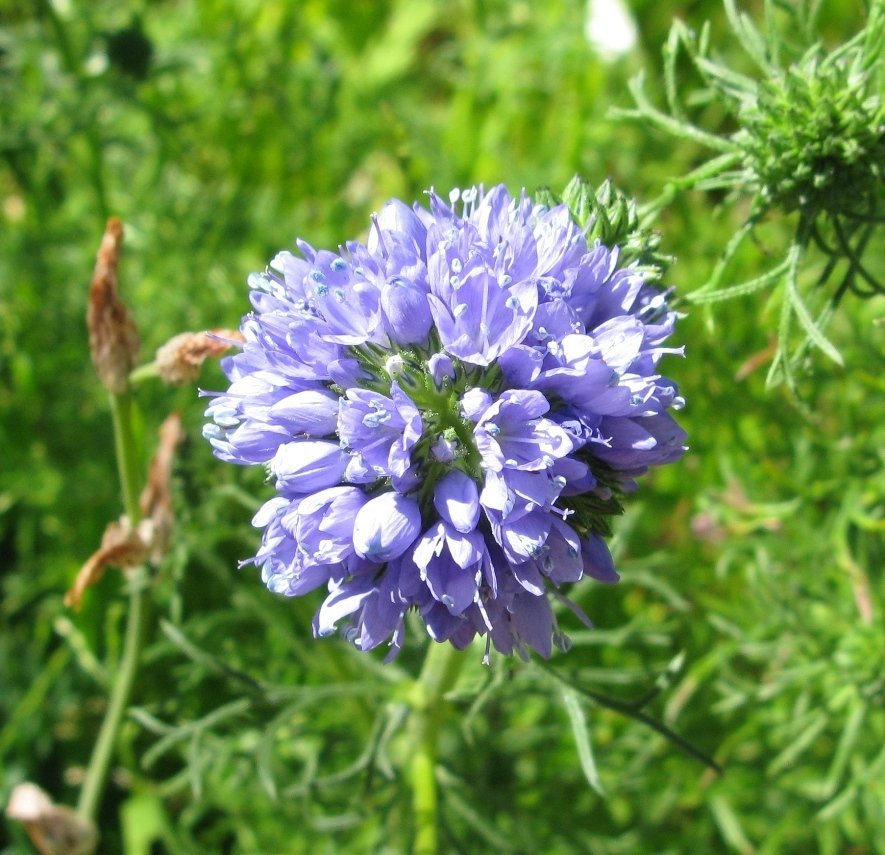
African violet, Saintpaulia ionantha
Plumbago, Plumbago auriculata
Bearded iris, "Best Bet"
Globe gilia, Gilia capitata
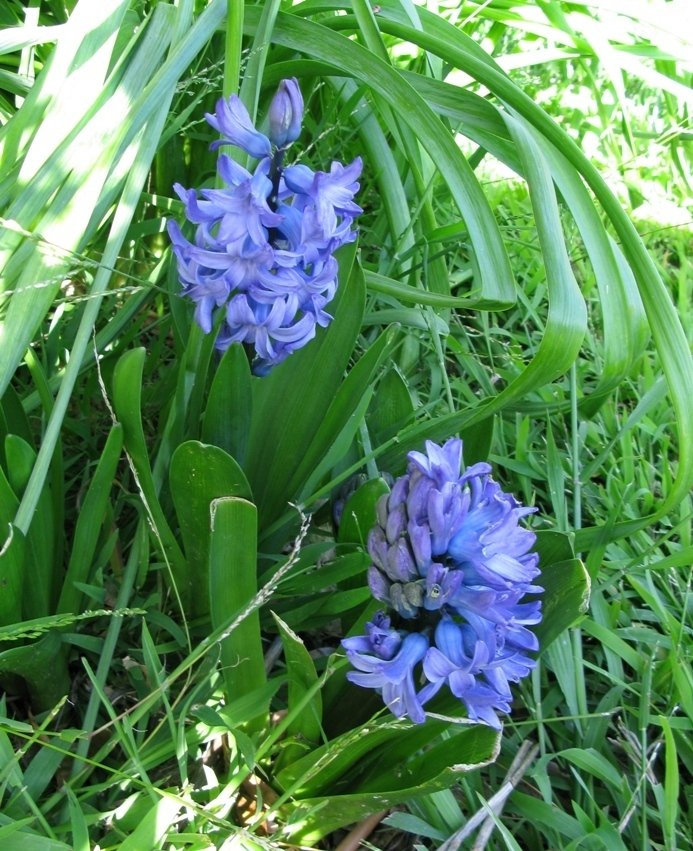
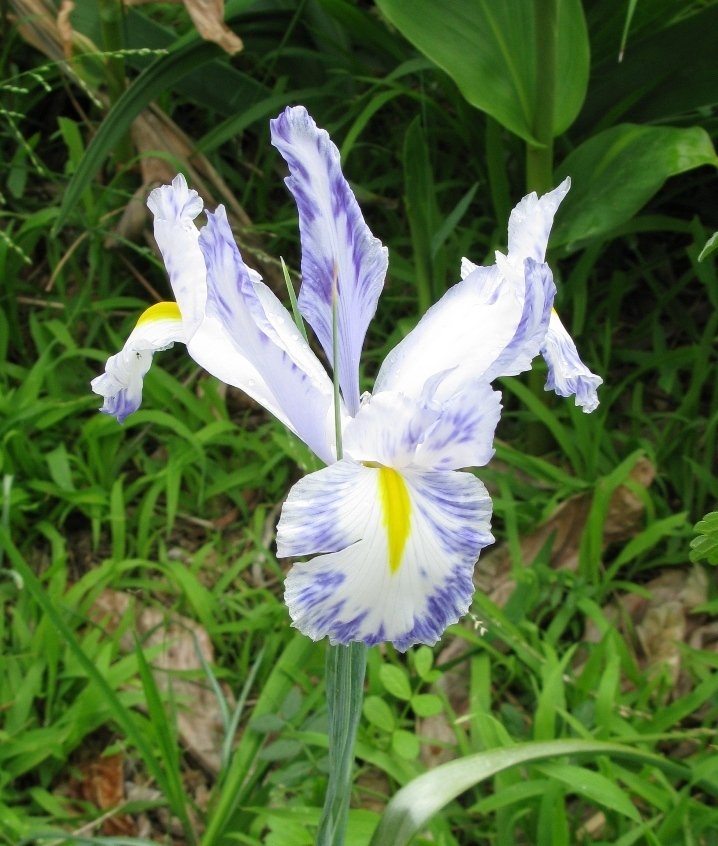
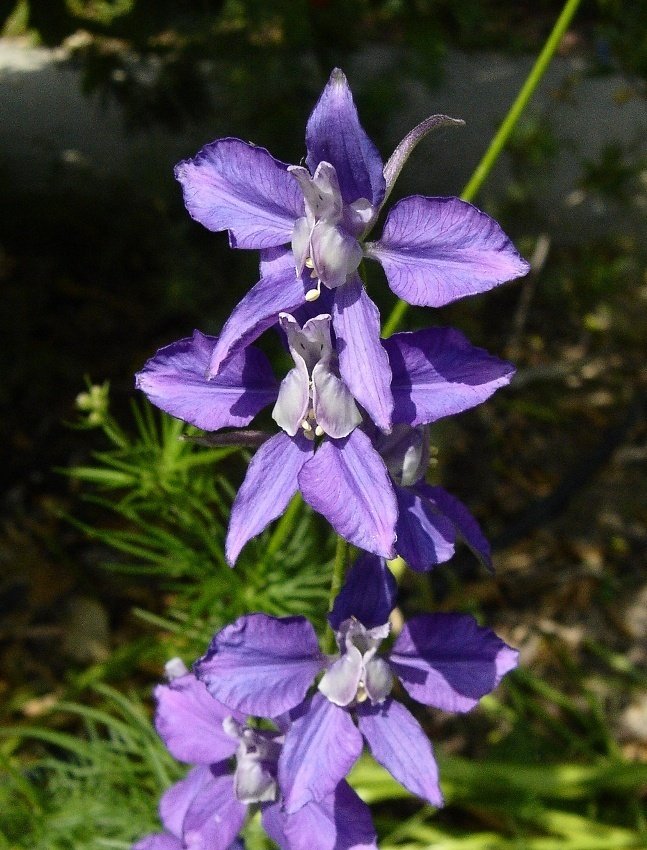
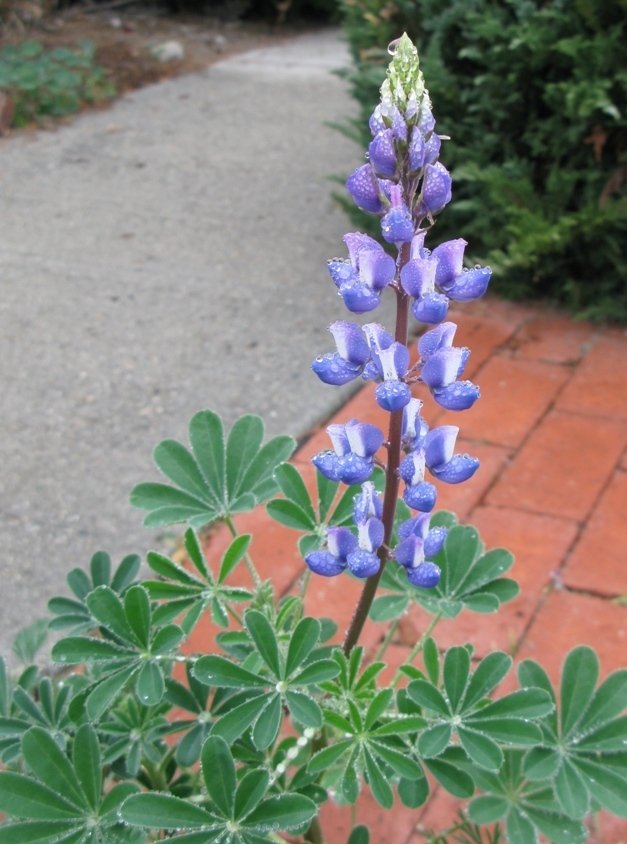
Hyacinth "Blue Jacket"
Dutch iris "Delft Blue"
Rocket larkspur, Consolida ambigua
Arroyo lupine, Lupinus succulentus
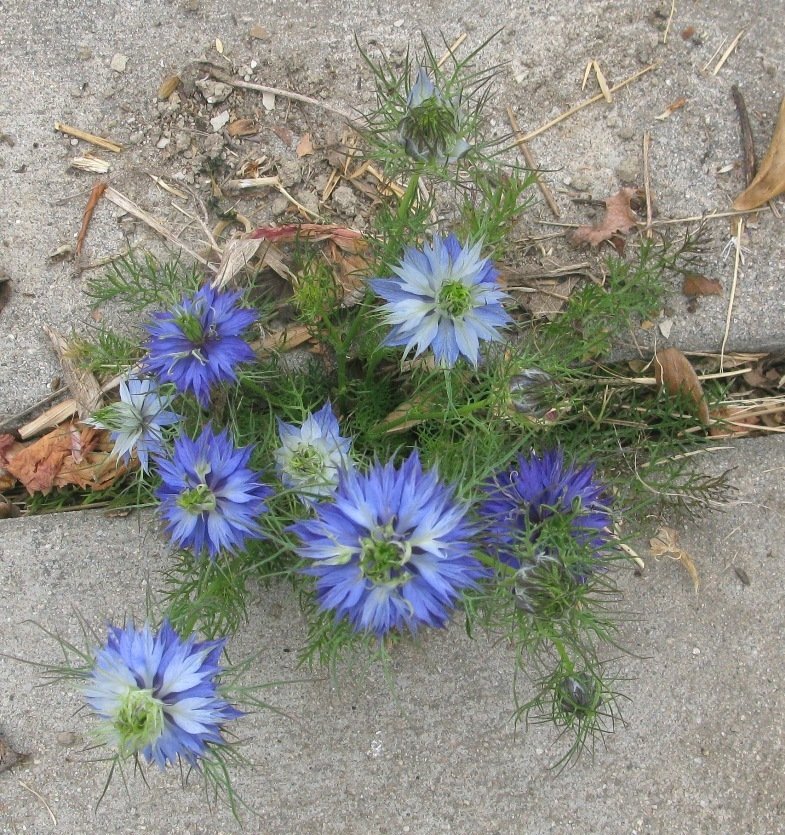
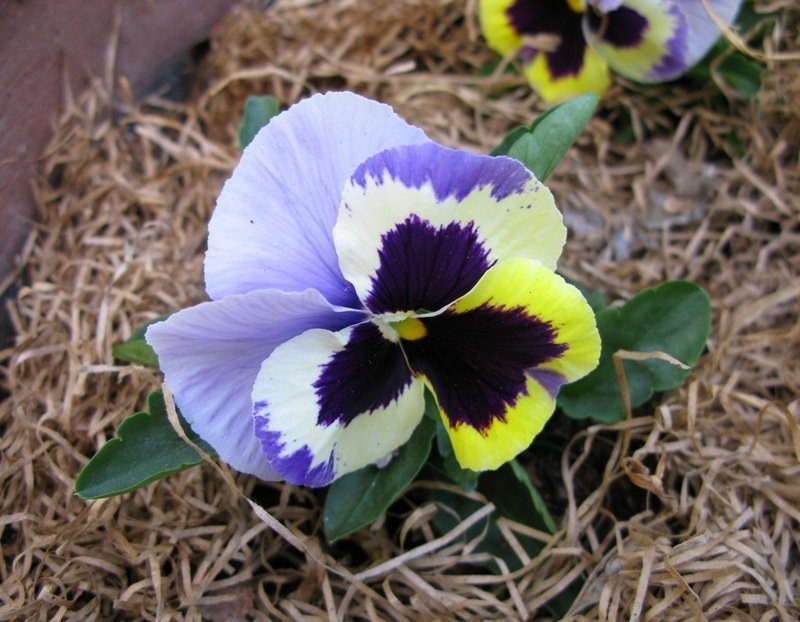
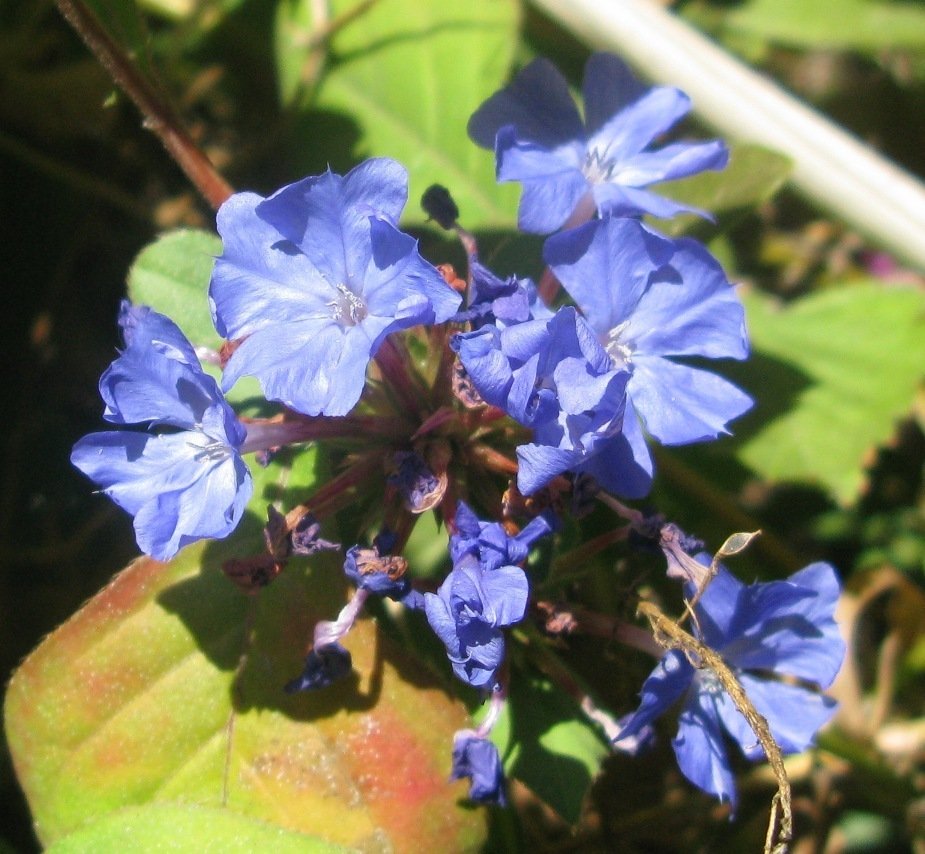
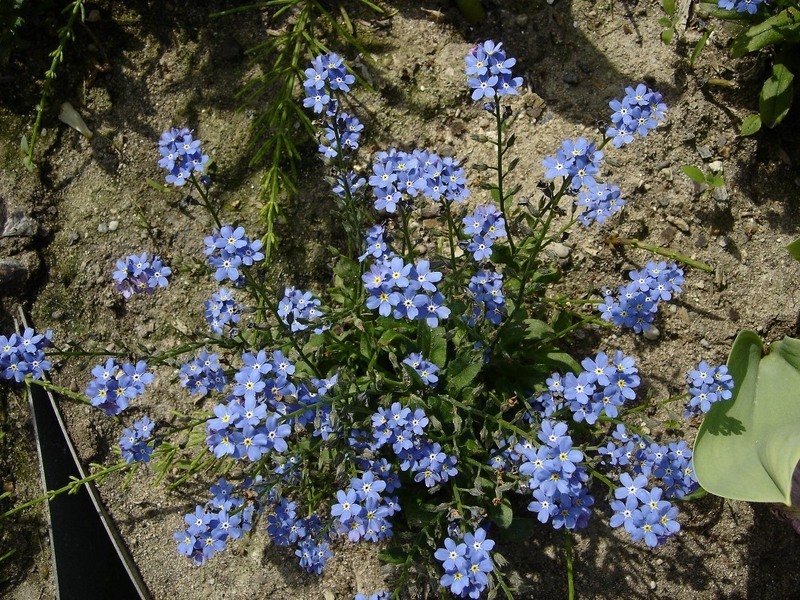
Nigella, Nigella damascena
Pansy, Viola x wittrockiana
Plumbago, Ceratostigma plumbaginoides
Forget-me-not "Dandy"
If you feed backyard birds, there is a very good chance that you get some blue visitors, namely jays, like the blue jay, scrub jay, Steller's jay, or Mexican jay. You may be fortunate enough to see lazuli buntings, indigo buntings, or blue grosbeaks. If you have or live next to a very large lawn or pasture, you might be able to attract nesting bluebirds.
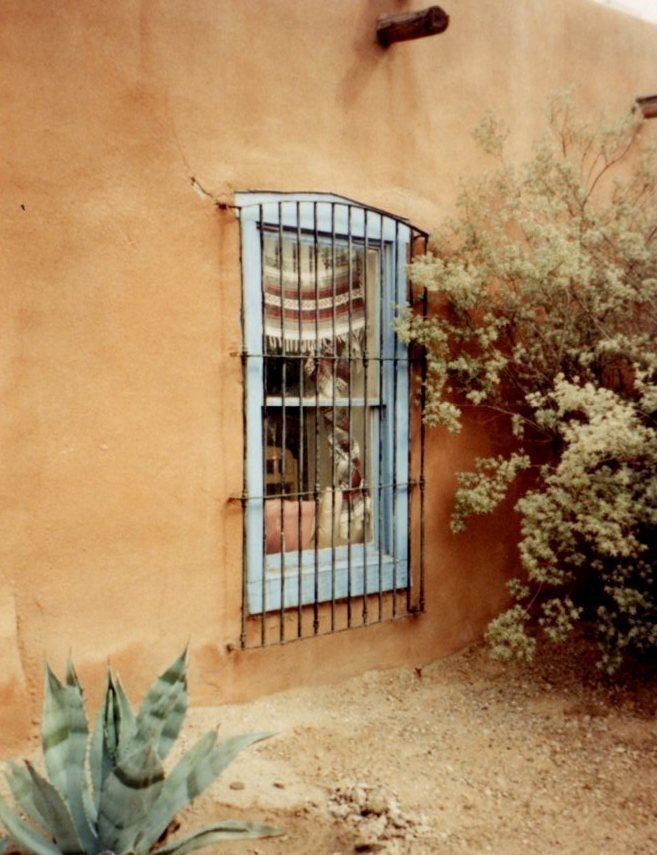
House, Mesilla, New Mexico
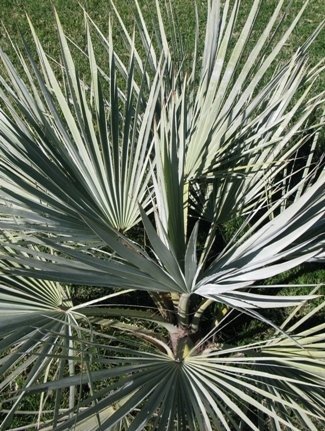
Mexican blue palm, Brahea armata
Blue yard and porch furniture may give a suggestion of peace, sky, or sea. A blue bench would be appropriate for a quiet contemplation corner. A blue swing might conjure up dreams of flight, sailing, or undersea exploration. Blue striped curtains can give a nautical or beach house look anywhere.
Blue window frames, doors, and gates have been used for centuries. These are still popular around the Mediterranean and also in New Mexico. It was thought that the blue color kept out evil spirits. In the past, porch ceilings were painted light blue. People thought that this would fool wasps and hornets into thinking the ceiling was open sky and not a suitable place to build a nest.
For blue yard art, consider the bottle tree. The bottle tree is an American Southern folk tradition. A bottle tree is a real tree or tree-like object upon which bottles are hung or stuck over the ends of the branches. Any kind of bottle can be used, but blue seems to be the most popular color. The traditional purpose of the bottle tree was to capture evil spirits. The idea was that they would enter the bottles at night, get trapped in there, and be destroyed by the rising sun.
An all-blue garden may look too subdued for most tastes. This need not be a problem. Blue pairs well with other colors. For the most contrast, pair blue with yellow or orange. For a little more subtle of a contrast, pair blue and white. Blue and red provide a patriotic look. Blue and pink are cheerful. For a calm and dignified look, pair blue and purple.
Blue is said to be the most popular favorite color. It is also one of the few colors that is liked equally well by both men and women. Advertising and pop culture tell us that we should want things bigger, stronger, faster, louder, more aggressive, and more extreme. Maybe what we really want is more peace.
Here's wishing you blue skies and no blue days.
Copyright © www.100flowers.win Botanic Garden All Rights Reserved